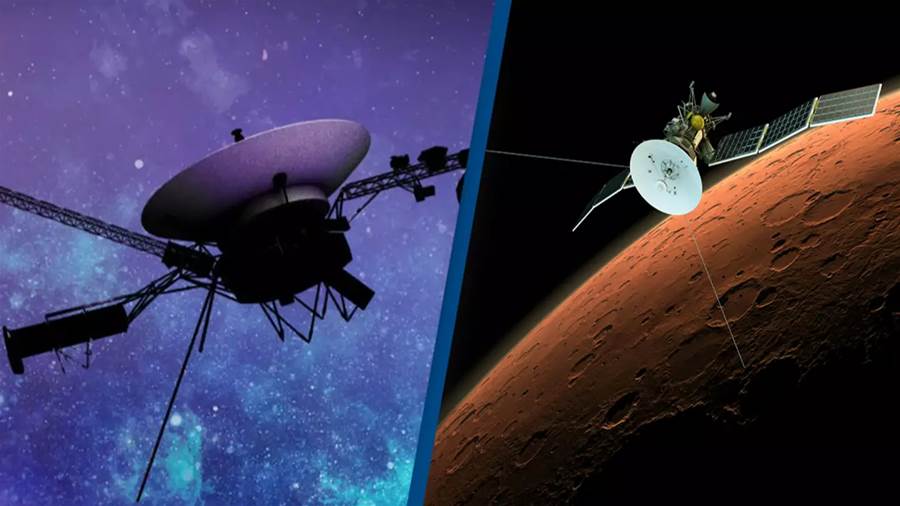

In a remarkable feat of engineering and perseverance, NASA has successfully reestablished contact with the Voyager 1 spacecraft, now an astonishing 24 billion kilometers from Earth. This historic reconnection utilizes a radio transmitter that has remained dormant since 1981. But what does this mean for the future of space exploration, and how did it all come together?
Launched in 1977, Voyager 1, alongside its twin Voyager 2, has traveled farther than any other human-made object.
For over 47 years, these probes have been sending back invaluable data about our solar system and beyond, becoming our eyes and ears in interstellar space. However, recent silence from Voyager 1 sent ripples of concern through NASA's Jet Propulsion Laboratory. Just when it seemed the mission might encounter its first major hurdle, the agency pulled off a stunning comeback.

The mystery began when Voyager 1 unexpectedly switched off one of its two transmitters, leaving scientists puzzled and anxious.
The spacecraft, which has faced its share of technical challenges over the years, seemed to trigger its fault protection system, a mechanism designed to preserve energy during emergencies. This unexpected shutdown raised alarms among mission engineers who immediately began troubleshooting to determine the root cause.
Experts speculated that the transmitter's shutdown was a protective response to power management issues. "If the spacecraft draws too much power, the fault protection system kicks in, shutting off non-essential functions," one engineer explained.
This could indicate aging equipment and the potential for more complications ahead. The time it took for commands to travel back and forth across the cosmos—23 hours each way—added to the challenge. Each interaction was a slow dance with distance, with engineers holding their breath for updates.

After several tense days, NASA engineers discovered that Voyager 1 was transmitting a signal using a second radio transmitter, known as the S-band. This transmitter hadn't been utilized for communication in over 40 years, prompting a mix of excitement and skepticism among the flight team.
"The S-band operates on a different frequency and is significantly weaker than the X-band transmitter," noted NASA’s Tony Greicius. There was uncertainty about whether the faint signal could even reach Earth, given the vast distance involved.
Against the odds, the Deep Space Network managed to detect the S-band signal. On October 22, NASA sent a command to verify its functionality, which was met with a positive response. The discovery of the S-band signal represented not just a technical victory, but a profound connection to humanity's past explorations and ambitions in space.
Voyager 1's continued operations are a testament to human ingenuity, allowing us to gather data from the outer reaches of our solar system.

With the S-band transmitter confirmed operational, NASA engineers are now focused on restoring Voyager 1 to its normal functions. The mission is far from over; scientists are eager to continue receiving data from this invaluable spacecraft, which has taught us so much about the universe. This remarkable chapter in space exploration underscores not only the technological achievements of the past but also the challenges that lie ahead.

The journey of Voyager 1 reminds us of the fragility and wonder of human exploration. As we look to the stars, we invite you to share your thoughts on this incredible mission and what it means for our understanding of the universe. How do you see the future of space exploration unfolding?
